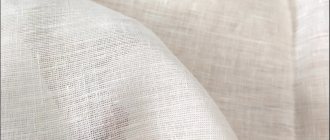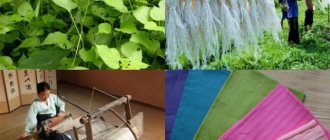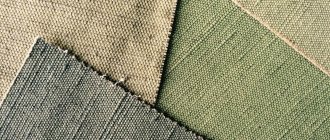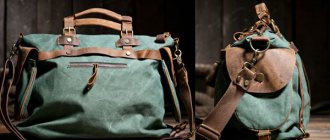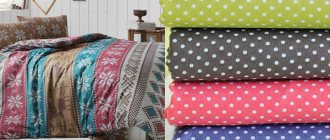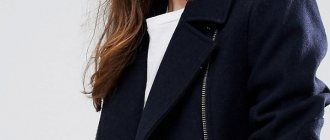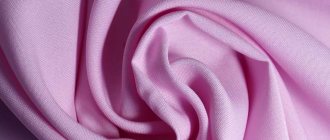Historical facts
According to some archaeologists, hemp began to be used more than 4 thousand years ago. Even in ancient times, this plant was a raw material for the manufacture of clothing, bed linen, sailing sheets, curtains and many other textile products. It was also widely used for the manufacture of ropes, ropes and cables. In Russia, hemp began to be cultivated under Peter I, and the fibers extracted from the plant were called hemp or hemp. It was also used as caulking for wooden houses.
There are two types of the plant: Cannabis Sativa, which is legal for cultivation and used for industrial production, and Cannabis Indica, which contains higher amounts of tetrahydrocannabinol (a psychoactive drug), its fibers are of lower quality and are used in the production of drugs and some types of medicines.
At the beginning of the twentieth century, the famous company LEVI'S produced its first jeans made from hemp fabric and tried to establish their mass production. But the process was very labor-intensive, and then the war on drugs began to interfere with this. Nowadays, when they began to cultivate hemp that does not contain narcotic substances, and the technological process became easier, this type of fabric began to rapidly gain popularity.
Cannabis is a dioecious plant, meaning there are male and female plants. Bushes with male flowers are called “poskonyu”, and those with female flowers are called “materka”. Male ones ripen faster, so they used to be collected by hand, even before they hardened, and the mother was left to ripen to obtain seeds. Thin fabrics for clothing were made from the raw material, and ropes and ropes were made from the mother cloth.
Description and composition of fabric
Hemp fabric is a material made from the plant of the same name - hemp, which does not contain narcotic substances. The hollow stem from which the fibers are obtained is used for processing.
Hemp fabric was used by mankind 4000 years ago. Shirts and bed linen were woven from threads. Large scraps were used to make sails. In Russia, the use of hemp for making ropes and textiles began during the reign of Peter I.
The strength, cheapness, and hygienic properties of the material were so high that this material began to be used in many sewing industries. The first batch of the legendary LEVI'S jeans was made from hemp fabric.
The plant is represented by 2 species – male (poskon) and female (materka). Male fiber produces a coarser fiber; ropes and ropes are made from it. Female is used for making fabrics.
The technology of pre-processing of raw materials is interesting:
- plants are planted closely, but this does not interfere with their growth;
- after the leaves fall, the bare stems are mowed down;
- left on the field under the sun and rain (rains soak the stems, wash away nutrients that return to the ground);
- turn over periodically;
- The softened stems are collected using hemp harvesters, which immediately separate the pulp and fiber.
After this, the enterprise bleaches the fibers and produces threads, fabrics, fillers, and tow.
Watch the interview with the fashion designer:
Kinds
There are 2 main types of hemp fabrics - hemp fabrics and coarse materials. Hemp (“poskonnaya”, “zamashnaya”, “hemp”) has a wide range of colors and is used in the production of clothing, linen, and bags. Available for sale:
- hemp fleece;
- natural unbleached and undyed fabrics;
- white, sandy, high-strength fabrics;
- jeans;
- mixed options - hemp with wool (suit fabric);
- hemp with cotton (biocotton);
- hemp with cashmere.
The fibers of male plants are used to produce bags, coarse fabrics, ropes, etc.
To watch a news story about fabric production:
Production Features
Read about: velvet: incomprehensible, great and perfect.
The fabric is produced from the stems of the plant, which consist of pulp and fibers. The bushes are planted in the fields very close to each other, when the leaves fall, the remaining stems are mowed down and left to lie on the ground in rain and sun, sometimes turning over so that the sun hits each side. The fibers become soft, and all minerals return to the ground along with rainwater. This process is called biological lobe or spread. The stems are then collected by a special machine that separates the fiber from the pulp. Previously, this was done manually. The resulting fiber is bleached and dried.
On a note
The production of hemp fibers does not use a large number of chemicals, unlike the production of synthetics and cotton.
Fabric production process
Hemp fabric is produced using spread technology. When all the leaves on the bushes fall off, the stems are mowed down and left on the ground. Once they become soft, they are collected by a special machine, after which the pulp and fiber are separated, which is dried and bleached, and sent to the line for the production of fabric.
Fact! While the crop stems lie on the ground, all minerals return to the ground.
Previously, the entire fabric production process was carried out entirely by hand.
Hemp fabric and its properties
Hemp products are practical and easy to use, as they have many positive qualities:
- strength and wear resistance. Hemp fibers are the strongest among plant fibers, they are several times stronger than cotton and wool. Clothes made from such fabric can withstand repeated washing and will last for many years;
- hygroscopicity. The fibers are porous, due to which the fabric is able to absorb large amounts of water. This ensures good “breathing” of the skin and optimal thermal balance. Hemp clothes are warm in winter and cool in summer;
- hypoallergenic. When growing a plant, there is no need to use fertilizers or chemicals to control pests, so clothing made from such fibers is environmentally friendly and non-toxic, suitable for people with sensitive skin. In addition, it does not attract dust particles;
- do not accumulate static electricity, unlike synthetics, wool and cotton;
- softness. Hemp is softer and warmer than cotton, its fibers are longer and stronger;
- lightness and color fastness. Dyes better than cotton and other types of fabrics;
- resistance to deformation. The fibers do not shrink at water temperatures up to 300 degrees.
Hemp fabric. Unique properties
Their hemp clothing is about comfort, practicality, environmental friendliness and wellness.
Hemp fabric and clothing made from it were enviably popular with our ancestors. According to archaeologists, even eight thousand years BC, people sported hemp robes. The well-known company LEVI'S at the beginning of the twentieth century tried to establish mass production of clothing from this material. True, at that time the fabric required complex processing, equipment, and considerable investment. And then the fight against drugs began...
But today, the development of drug-free hemp and new technologies for its processing make the resulting material the most promising fabric on the planet. Cannabis products are beginning to enjoy enormous popularity, thanks in part to the rapidly developing fashion for natural and environmentally friendly products.
Hemp fabric differs from other materials in its practicality, ease of use, as well as other unique properties inherent in it by nature itself.
Firstly , as many people know, such material is very durable and long-lived, because hemp fibers are the strongest and most durable among plant fibers. The wearability of clothing made from this material is several times higher than its main competitors. Hemp fabric does not stretch, maintaining its shape and proportions. When washed, the fabric does not deteriorate, and therefore an item purchased once will serve until you no longer like it.
Secondly , thanks to the porous structure of hemp fiber, the fabric is able to absorb moisture up to five hundred percent of its weight. This ensures, on the one hand, a high coefficient of respiratory activity of human skin, and on the other hand, maintaining optimal heat exchange for the human body: in winter, wearing hemp clothes is not cold, and in summer, it is not hot. As a result, the body responds gratefully with a significant reduction in sweat and fat secretions.
Thirdly , hemp fabric protects the human body from the harmful effects of the external environment.
As is known, ultraviolet irradiation has a detrimental effect on human skin: the resulting free radicals cause premature aging and even provoke tumor diseases. The lignin contained in hemp fiber allows you to block harmful radiation almost completely - by 95%, while other fabrics boast rates from 30 to 70%.
Hemp has a depressing effect on bacteria, fungi, microorganisms and mold (it has been noted that where hemp grows, trees and shrubs do not become infected and even insect pests disappear). The fabric obtained from hemp retains this valuable property: it completely destroys the unpleasant odor of sweat, as an indispensable attribute of the active life of pathogenic organisms.
Hemp fabric is hypoallergenic. Cannabis, unlike other industrial crops, does not require treatment with pesticides and other chemicals to protect and stimulate growth. Accordingly, there is no chemicals in the resulting fabric. Also, clothing made from hemp does not collect dust and microparticles that provoke allergic reactions.
In addition, hemp clothing (unlike synthetic, wool and even cotton) does not accumulate static electricity, which negatively affects the functioning of the human cardiovascular system.
Fourthly , with constant use, the fabric reveals additional healing properties of hemp as a medicinal plant, actively affecting the human body.
Living hemp tissue has a refreshing and softening effect on the human body, toning it and beneficially affecting the functioning of the entire body throughout the day.
During heavy physical activity, the body receives additional support during the recovery period, quickly replenishing energy costs.
Doctors also drew attention to the positive psychophysical effects of hemp clothing, which is associated with a beneficial effect on the state of the nervous system through contact of the exocrine glands with the tissue. It has been noted that hemp fabric has an analgesic and sedative effect, and therefore can be useful in the treatment of diseases such as erysipelas, bruises, fractures, mastitis, diathesis, scrofula.
And above all, today hemp clothing is about individuality . Clothes made from environmentally friendly fabrics that have their own character are a way of life for people of the new millennium. This is a style based on the idea of higher energy, allowing you to feel fulfilled by a thing and not depend on fleeting impressions. By dressing in hemp (as fabric made from hemp is sometimes called, from the English hemp - hemp), the consumer can be sure that he will not come face to face with a person dressed the same way.
That is why in Europe, the USA and Canada, hemp is becoming an elite material for modern designers.
Benefits for the body
Textiles made from hemp are protected from the effects of fungi and pathogens. They are not afraid of mold and bacteria, they completely destroy the smell of sweat.
Read about: lightness and airiness in beautiful chiffon fabric.
The fabric refreshes and tones the body, and also has a restorative, calming and analgesic effect. It is recommended for the treatment of erysipelas, diathesis, mastitis, and bruises.
Clothing made from hemp almost completely (95%) blocks the harmful effects of ultraviolet rays, thereby preventing premature aging of the skin.
Fabric properties
Hemp is the oldest type of plant crop used in the production of environmentally friendly and safe high-quality materials.
This fabric has unique properties:
- fiber strength, which increases when the fabric gets wet;
- no stretching or deformation (clothing retains its original shape even after numerous washes and intensive use);
- the softness of hemp textiles, which increases with each subsequent processing and washing;
- ability to absorb moisture and reduce sweating;
- convenience and comfort while wearing.
Hemp is an environmentally friendly material with high insulating properties. It has long been proven that the hemp stem has the ability to absorb moisture in large quantities. Such an amazing property is highly valued not only in the textile industry, but also in construction, due to its ability to absorb excess moisture. Therefore, a wide range of environmentally friendly materials are produced based on hemp. When wearing clothes made of such fabric, there is no feeling of discomfort, because excess sweat is quickly eliminated and natural ventilation is ensured. This quality is especially valuable in hot summer weather, or during active sports.
Application
hemp jeans
The fabric, which retained all the beneficial properties of the plant during production, began to be used again for the manufacture of clothing, accessories, interior items, and is even used to decorate indoor walls.
Hemp clothing and accessories
Hemp fibers are used to produce various items of women's and men's clothing: shirts, T-shirts, dresses, sweaters, socks. Thanks to modern technologies, the fabric can be very rough and textured (like burlap), or, on the contrary, thin and smooth like silk. Due to its positive effect on the body as a whole and its hypoallergenic nature, this fabric is often used in the production of clothing for newborns.
Due to the lack of a "greenhouse effect" in clothes made from hemp fabric, it is pleasant and useful to exercise. Knitted items made from hemp yarn are very light, do not shrink, do not stretch or fall off even when machine washed. The yarn can be made from 100% hemp fibers or with the addition of cotton, linen and cashmere.
Backpacks and bags made of hemp fabric are durable, wear-resistant and look very stylish.
Home textiles
In eco-style interiors, curtains made of hemp fabric are used, and decorative pillows, tablecloths, bedspreads, and canopies are also sewn from it. They repel dust, do not fade, do not deform and last a very long time.
It is very comfortable to sleep on bed linen made from such fabric; it absorbs moisture without sticking to the body. Hemp fabric is capable of emitting electric waves corresponding to the electronic waves of human skin.
Advantages and disadvantages
Pros:
- It allows moisture and air to pass through, and in such clothes the skin “breathes.”
- Thermoregulation - it is not hot in a thin frame, but a dense one retains heat well.
- High strength - 20-30% stronger than cotton and linen.
- High wear resistance - the fabric wears out very slowly, so it looks new for a long time.
- Products made from poskony hold color well and do not fade.
- Has bactericidal properties. The plant contains a large amount of phytoncides, which help it fight pests. After the fibers dry, some of these properties are retained.
- Recommended for those prone to allergies. The plant itself is hypoallergenic: no chemicals are used in its cultivation and processing.
Minuses:
- Do not dry-clean or treat items with acetone, gasoline, etc. If you need to remove a stain, you should use an oxygen-based solution.
- The price is higher than that of cotton and linen.
Product care
- It is better to wash hemp products on a delicate cycle at medium temperatures.
- Since the threads are made of porous fibers, during washing they absorb detergent along with water. If the powder does not dissolve well, its particles can damage the structure of the fibers. Therefore, it is advisable to thoroughly dissolve it or use only liquid detergents.
- Items should be rinsed thoroughly to ensure that no traces of detergent remain in the fibers.
- It is better to dry such things outdoors.
- It is better to iron them slightly damp, from the wrong side. Use the “linen” mode.
Useful
The more often you wash hemp products, the softer they will become. Before using bed linen, it must be washed and dried in the washing machine several times to make it more delicate.
In many characteristics, hemp fabric is several times superior to other natural ones. Products made from it are environmentally friendly, hypoallergenic, look stylish and fashionable. With proper care they will last a very long time.
© 2021 textiletrend.ru
Distinctive features of the fabric
Clothing made from hemp fabric has a unique ability to “breathe”, so it can be worn even in hot weather without experiencing discomfort. Hemp literally absorbs heat, releasing it when the ambient temperature drops. For this quality, hemp is often called a natural conditioner. As the popular proverb says: “a hemp shirt will keep you cool in the summer and warm in the winter.”
In addition, hemp fabric has a pronounced antibacterial and antifungal effect . This material naturally helps prevent rotting and destroy parasitic fungal spores. Thanks to these plant properties, hemp crops do not need to be treated with pesticides and herbicides throughout the entire growing period.
Hemp has another remarkable property - protecting the skin from harmful UV rays. Clothing made from this material filters out a large spectral fraction of ultraviolet radiation (especially UV-B rays), which negatively affects the skin and accelerates the aging process.
